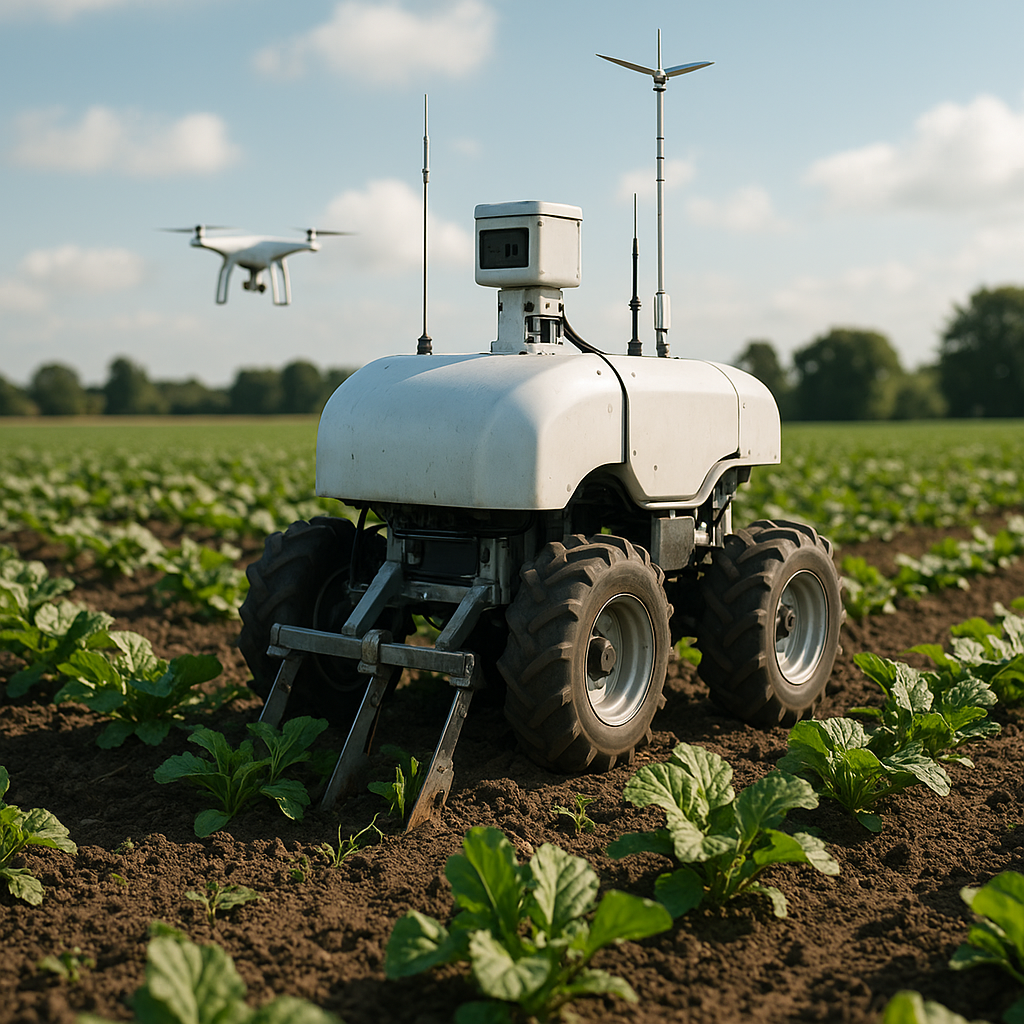How AI and robotics are transforming weed management in agriculture
The study positions smart precision weeding as a cornerstone of future farming systems, capable of addressing global food insecurity without expanding agricultural land. Traditional weeding techniques, though widely used, suffer from multiple limitations: manual methods are labor-intensive and unscalable, mechanical tools often cause soil degradation, and chemical herbicides lead to resistant weed species and harmful environmental residues. With weed interference causing an estimated 34% reduction in global crop yields, an innovative solution is urgently required.

Researchers from Inha University have presented a compelling vision for the future of farming, emphasizing the power of next-generation technology to transform weed management. In their study, they argue that conventional weeding practices, whether manual, mechanical, or chemical, are insufficient to meet the global food demands projected for 2050 and often cause environmental degradation. As a response, a fusion of artificial intelligence, robotics, and the Internet of Things (IoT) under the umbrella of the Fifth Industrial Revolution (5IR) could redefine agricultural productivity.
The findings are published in a peer-reviewed article titled "Smart Precision Weeding in Agriculture Using 5IR Technologies" in the journal Electronics (2025, Vol. 14, Article 2517), authored by Chaw Thiri San and Vijay Kakani. The review highlights how integrating 5IR principles, centered around ethical AI, human-centric design, and digital connectivity, can radically enhance the accuracy, scalability, and environmental compatibility of weeding systems.
What makes smart precision weeding a breakthrough in agriculture?
The study positions smart precision weeding as a cornerstone of future farming systems, capable of addressing global food insecurity without expanding agricultural land. Traditional weeding techniques, though widely used, suffer from multiple limitations: manual methods are labor-intensive and unscalable, mechanical tools often cause soil degradation, and chemical herbicides lead to resistant weed species and harmful environmental residues. With weed interference causing an estimated 34% reduction in global crop yields, an innovative solution is urgently required.
The authors describe how smart weeding systems employ AI algorithms, GPS, and real-time sensors to detect, classify, and eliminate weeds with surgical precision. This paradigm shift from blanket herbicide application to site-specific intervention not only improves yield outcomes but significantly reduces the chemical load on ecosystems. Technologies like Variable Rate Spraying (VRS) have demonstrated herbicide savings of up to 97% while maintaining high weed control efficiency. Moreover, deep learning models such as YOLOv7 and DenseNet have achieved classification accuracies exceeding 99%, enabling precise and automated decision-making in complex field environments.
By leveraging 5G/6G networks, these systems facilitate high-speed data transmission between drones, robotic sprayers, and edge devices, creating a responsive and scalable agricultural infrastructure. This integration of data-driven intelligence and machine autonomy is pivotal in enabling farmers to manage large-scale operations with minimal physical labor, thereby reshaping the economics and logistics of farming.
What are the current barriers to adopting 5IR-driven weeding technologies?
Despite their transformative potential, the widespread adoption of smart weeding solutions remains constrained by systemic challenges. High implementation costs, lack of digital infrastructure in rural regions, and knowledge barriers among farmers are some of the most pressing issues identified in the paper. The authors warn of a widening digital divide, where only large-scale agribusinesses may be able to afford and utilize advanced robotic platforms, while smallholder farmers risk being left behind.
Commercial case studies, such as the Titan and Vulcan robotic weeders developed by FarmWise, underscore both the promise and the exclusivity of these innovations. With such systems requiring substantial capital investment and maintenance, accessibility remains skewed toward well-funded farming enterprises. This introduces a risk of technological consolidation, potentially exacerbating economic inequality between large and small-scale producers.
Moreover, real-world field conditions pose practical limitations. Environmental variability, such as inconsistent lighting, unstructured terrain, and unpredictable weed morphologies, can degrade the performance of AI models trained in laboratory settings. Additionally, sensor technologies like NIR and laser scanners, though effective under ideal conditions, struggle in foggy, dusty, or snow-covered environments.
To address these gaps, the authors call for multi-stakeholder collaboration involving governments, academia, private companies, and farmer cooperatives. Initiatives like open-source development, policy subsidies, and digital training programs could help democratize access to smart agricultural technologies and ensure that technological progress is equitably distributed.
How can future research and policy frameworks enhance the impact of smart weeding?
The review recommends future research to focus on improving interoperability among farming tools, enhancing the adaptability of AI models to variable field conditions, and developing low-cost, modular hardware suitable for use in diverse agricultural settings.
The authors advocate for inclusive policy frameworks that prioritize investments in digital infrastructure, education, and local manufacturing. They suggest that governments should facilitate low-interest loans, subsidies, and training programs to support smallholder farmers in adopting advanced technologies. In parallel, collaborative research networks should be formed to develop open-access platforms and interoperable standards, ensuring that innovations are not locked behind proprietary ecosystems.
Most importantly, the paper envisions smart precision weeding as part of a broader 5IR-driven transformation in agriculture, where ethical AI, environmental stewardship, and human empowerment are core design principles. The convergence of technologies such as quantum computing, edge analytics, and blockchain could further enhance traceability, decision accuracy, and system resilience in the agricultural supply chain.
- FIRST PUBLISHED IN:
- Devdiscourse










